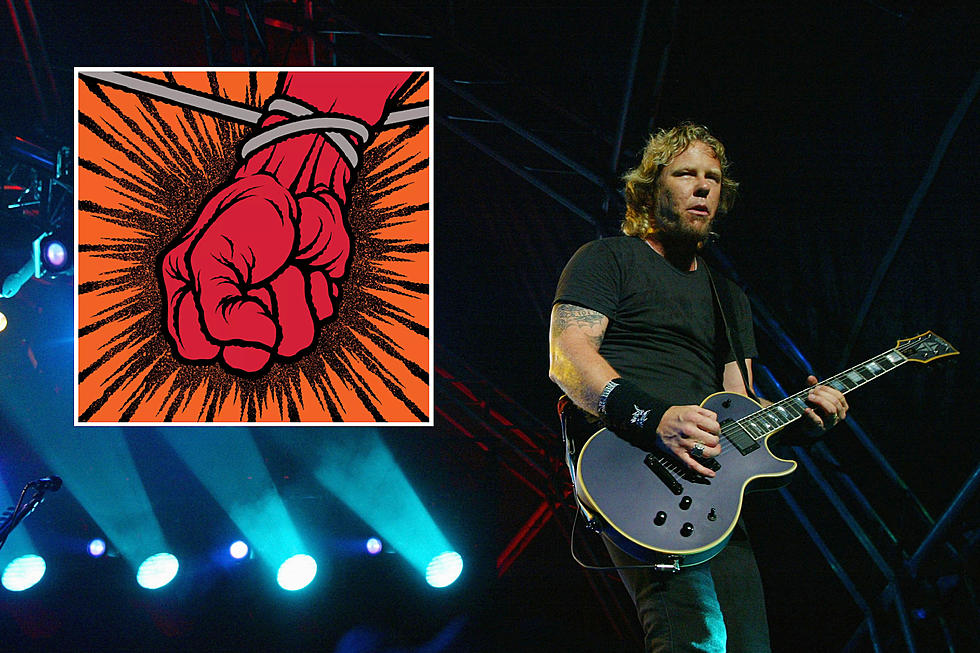
25 Years Ago: Metallica’s ‘…And Justice for All’ Released
After the devastating death of bassist Cliff Burton, on September 27, 1986, thrash metal heroes Metallica had to consistently prove the depth of their resiliency: first by even having the strength to carry on and achieve the most victorious album-tour cycle of their young career in the face of that unspeakable tragedy; and secondly by producing both a video tribute to Burton (‘Cliff ‘em All’) and breaking in his replacement, Jason Newsted, via 1987’s warmly received ‘The $5.98 EP: Garage Days Re-Revisited.’
But the real test to Metallica’s inexorable career ascension would rest on the success or failure of their fourth studio album, ‘…And Justice for All,’ which arrived in stores a quarter century ago today (Aug. 25, 1988), if you can believe that.
And what was the outcome?
Well, commercially speaking, 'Justice’ was of course a resounding triumph: one built as much on the band’s overwhelming stage performances over the course of the world-spanning, 13-month “Damaged Justice” tour, as it was on MTV’s heavy airplay of Metallica’s first true music video (devised for the morbid power ballad, ‘One’), which duly conquered mainstream radio before too long (and should have won the Grammy stolen by Jethro Tull, besides).
But, to all intents and purpose, 'Justice' was, structurally speaking, essentially 'Master of Puppets' on steroids. The long songs were longer (both the title track and the instrumental, 'To Live is to Die,' nearly broke the 10-minute mark), the fast songs were faster (namely 'Dyer's Eve'), the slow songs ('Harvester of Sorrow') were slower, the dark songs darker (lest we forget, 'One' was beyond disturbing), and the technical displays, well, sometimes too technical.
What’s more, Metallica seemed to have lost not only Burton’s one-of-a-kind talent, but their trademarked sound’s distinctive bottom end. It was as though Hetfield, Ulrich and Hammett were subconsciously trying to punish Jason Newboy for being chosen to take Cliff’s place. As a result, ‘…And Justice for All’s’ somewhat flat and tinny production (the last overseen by stalwart band engineer, Flemming Rasmussen) lacked in power and, in retrospect, could almost be considered a distant precursor to 'St. Anger's' wholesale production disaster of historical propositions.
So while scores of new Metalli-fans, shocked and awed for the first time by the band’s sheer songwriting invention, were understandably showering thrash metal’s biggest ambassadors with acclaim (and millions of dollars), many diehard fans who had accompanied the fearsome foursome’s remarkable rise from Bay Area obscurity to global domination were enduring their first minor Metalli-letdown. And that, in itself, was arguably less traumatic than seeing the scrappy underdogs they’d steadfastly championed for years, with no real hope of a major breakthrough, suddenly transformed into stars, to be shared with legions of so-called “poseurs!” In short: the war had been won, but victory had changed one and all.
In conclusion: whether you view ‘…And Justice for All’ as the ultimate Metallica LP or the band’s first stumble, two facts are undeniable:
One: the album pushed the original, '80s thrash metal template to its absolute limits in terms of songwriting ambition, instrumental technique, cerebral subject matter, etc. – to the point that Metallica themselves felt the need to reinvent themselves and rebuild their sound from scratch for 1991’s ensuing "Black Album."
Two: it was ‘…And Justice for All’ that first introduced the notion of ambiguity into Metallica's heretofore rabidly unified fan base, because that deeply polarized debate would come to dominate discussions about all Metallica albums ever since, no matter which course their music took.
More From Q 105.7










